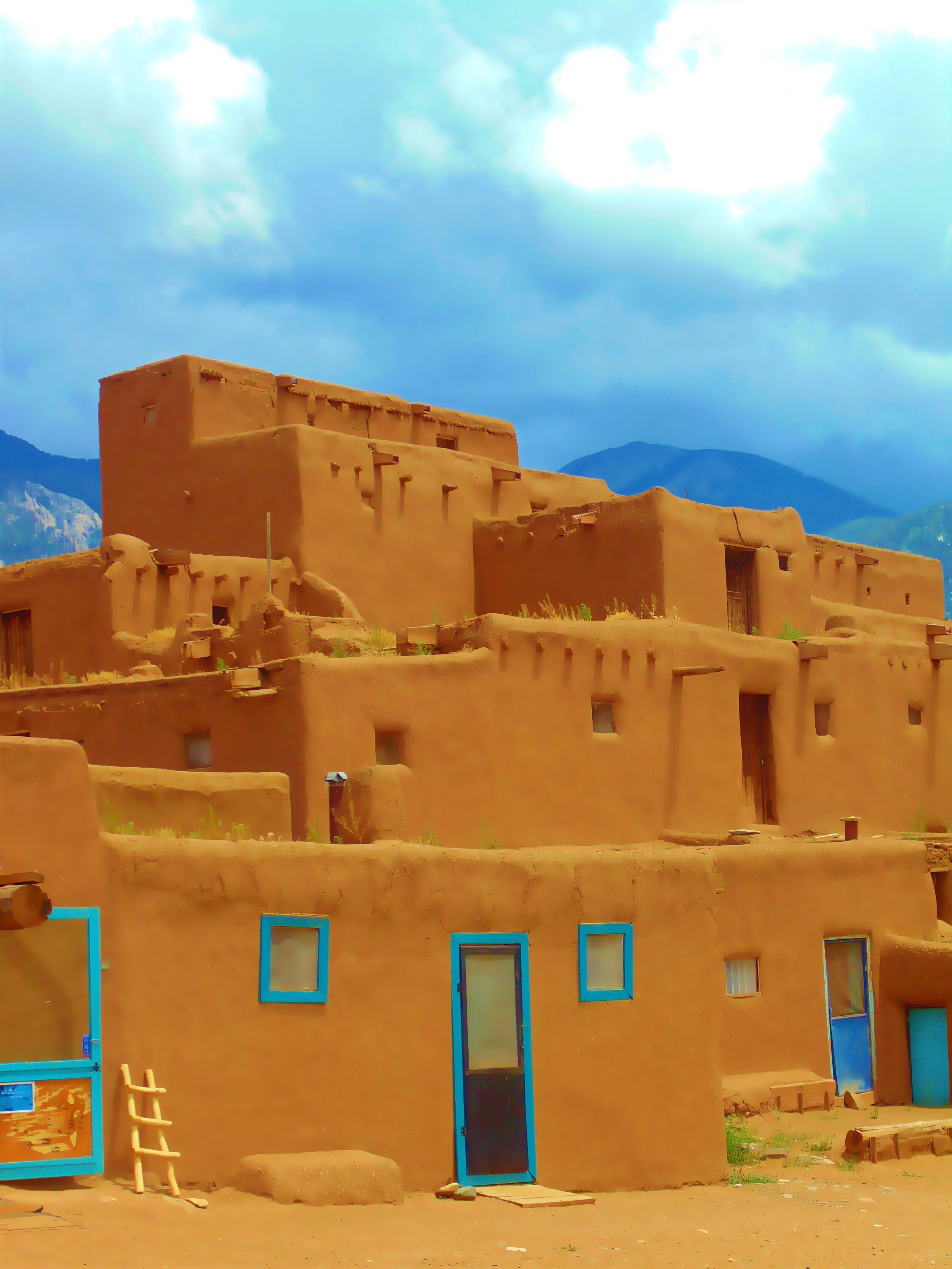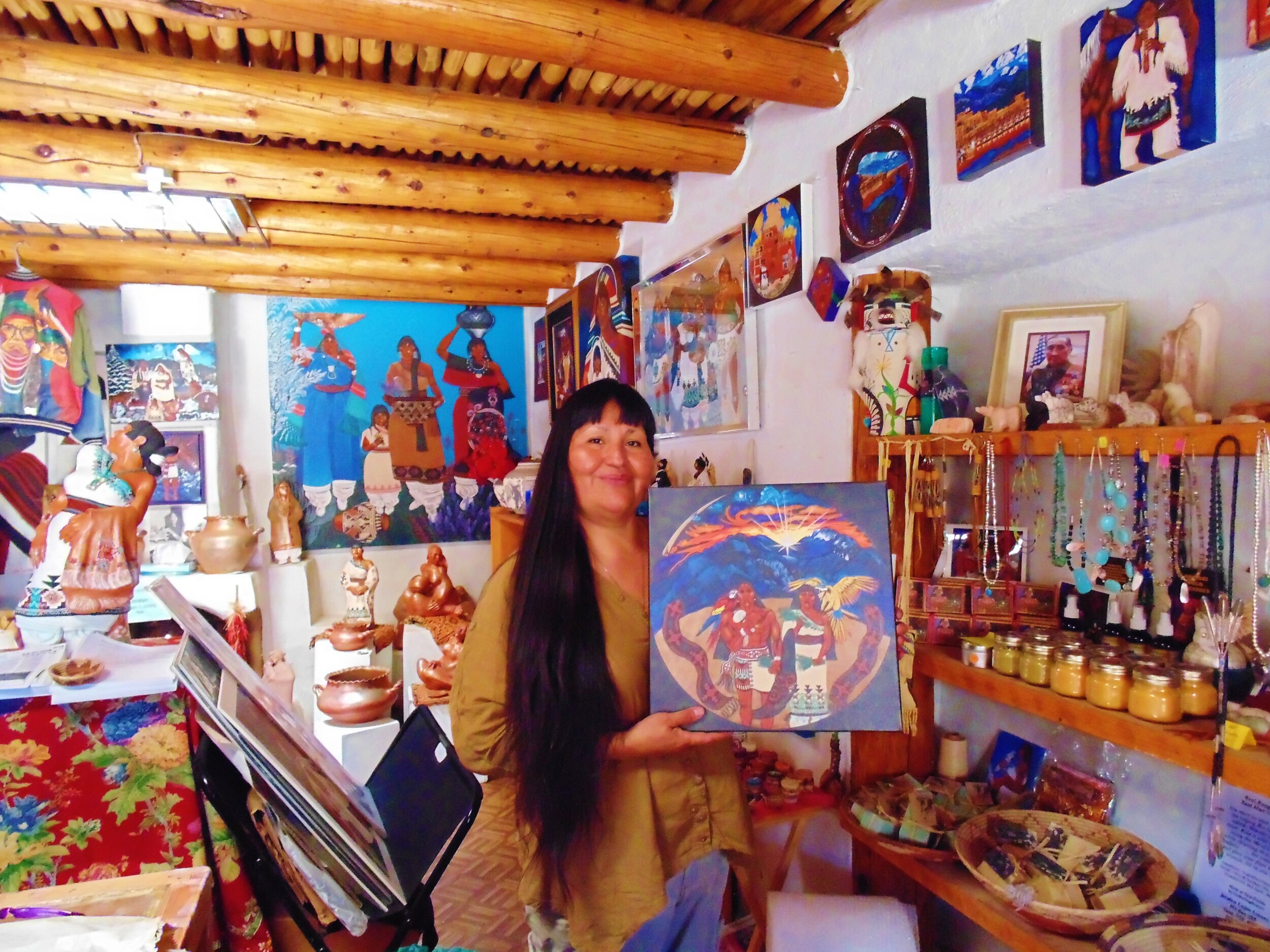Taos, New Mexico
Signs of life in Taos pueblo, earthships, and a sustainable future.
Having been through Albuquerque, Las Cruces, and Farmington, I had long been enticed by visions of Taos, New Mexico. Travel brochures and magazines filled with images of Taos Pueblo in particular had made this location one of my bucket list stops for years. However, I’ve come to discover that Taos is not only a place of extraordinary beauty, but one of sustainable living. Considering climate change and our current trajectory, Taos has a lot of lessons to offer.
Taos Pueblo History
This Native American settlement in northern New Mexico, specifically Taos Pueblo, is currently one of twenty-four UNESCO World Heritage sites in the United States and is a National Historic Landmark. It’s quite unique in this regard.
Its standing multi-story adobe dwellings date back to the 13th century, but Natives have been in this region since at least 12,000 BCE. Some estimates of the adobe structures are said to be over a thousand years old. The structures are maintained yearly by residents and are seen as a connection to their ancestral roots. Many of the homes have been passed down through generations with some dwellings being used specifically for cultural and spiritual purposes.
That Vibe Though…
You can certainly feel an “energy” in Taos Pueblo that is vibrant, beautiful, and inspires you to start taking photos like Ansel Adams.
Thousands of visitors seek out this 19-acre area, which is home to about 150 residents, that has a river that flows from Blue Lake just beyond the towering mountains behind Taos Pueblo. The 100,000-acre Taos Reservation is home to 2,600 Taos Natives.
While Taos - the town, and not Taos Pueblo specifically - is a wonderful place to discover Southwestern art, there are Native galleries located inside Taos Pueblo that I would seek out first. One of my favorite galleries is that of Taos Pueblo Native, Jeralyn Lucero.
Visit her site: https://jeralynlujanlucero.wordpress.com/
Visiting Taos Pueblo
While Taos Pueblo is undoubtedly worth the visit, you should also know a few things before you go:
You must pay admission fees before entry. Adults: $16 per person Groups (8 or more Adults): $14 per person Seniors: $14 per person Students: $14 per person Children 10 and under: Free.
Photography! While there is so much natural and human-made beauty in Taos Pueblo, you MUST get permission from the Tribal Tourism Office is you plan on using your photography beyond mere personal use (commercial use, artistic renderings, etc.) and pay a fee to do so. There’s a $6 camera fee, but anything beyond personal use could mean a hefty license fee. Also, PLEASE get permission before taking photos of residents. I can’t believe I have to say it, but, here I am.
Don’t open up random doors. People still live there and when in doubt, ask.
Altitude sickness. Taos is about 2,124 meters (almost 7,000 feet) above sea level. I can recall my two visits here feeling light-headed and it can be rough on the vocal chords, so be sure to drink PLENTY of water.
It’s cold. Taos is lovely, but it’s not uncommon to see snow on the mountains - even in the summer. Bring layers, just in case.
Considering how special this space is, it’s also quite amazing to see structures this old standing in the United States. Residents can surely speak on how maintaining these structures and sustainability practices keep this place a gem of the Southwest.
Earthships
After visiting Taos Pueblo and considering practices that continue to honor the earth, I had another site I needed to see: Earthship Biotecture.
An Earthship is a type of housing structure built with natural and recycled materials that are energy-efficient and sustainable. This type of home was designed by architect Michael Reynolds as he continues to do so through his company, Earthship Biotecture.
An Earthship’s sustainability is recognized by its construction of recycled materials (notably rubber tires, cans, glass, etc) and natural resources - similar to materials used in building and maintaining Taos Pueblo - that limit harm on the environment. It’s what one might call a radically sustainable home as it uses a variety of renewable energies (solar, wind, geothermal), treats its own wastewater, harvests rainwater, and is further enhanced by acting as an ideal structure to grow plants, fruits, and vegetables indoors.
It’s about as off-the-grid as one can get comfortably.
Leaving Taos, I took with me a reminder of how special this part of the country is. The magical glow and warmth of Taos Pueblo to Earthship Biotecture providing sustainable living solutions gave me a renewed sense of hope for the future. While there are other tourism draws and a ski resort in Taos, Taos Pueblo and the Earthship community were more than enough for me to leave inspired.
If Taos isn’t on your bucket list yet, make that amendment today.

